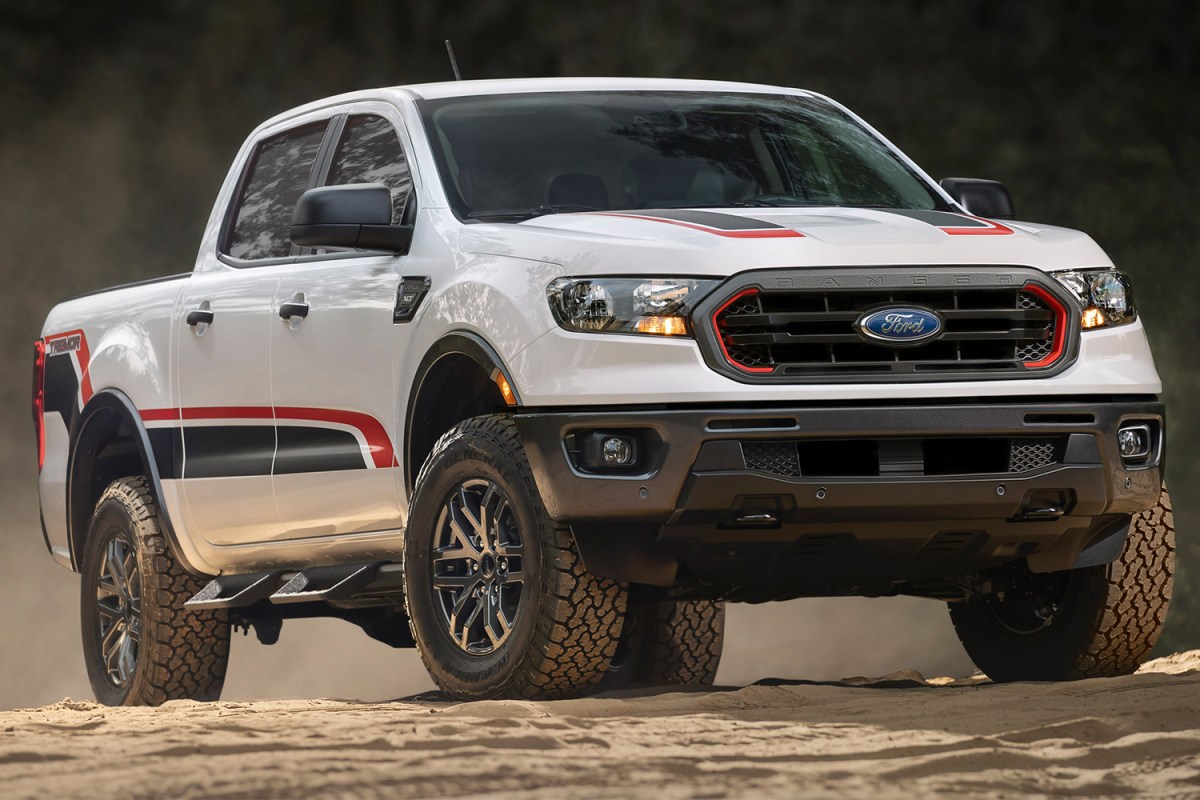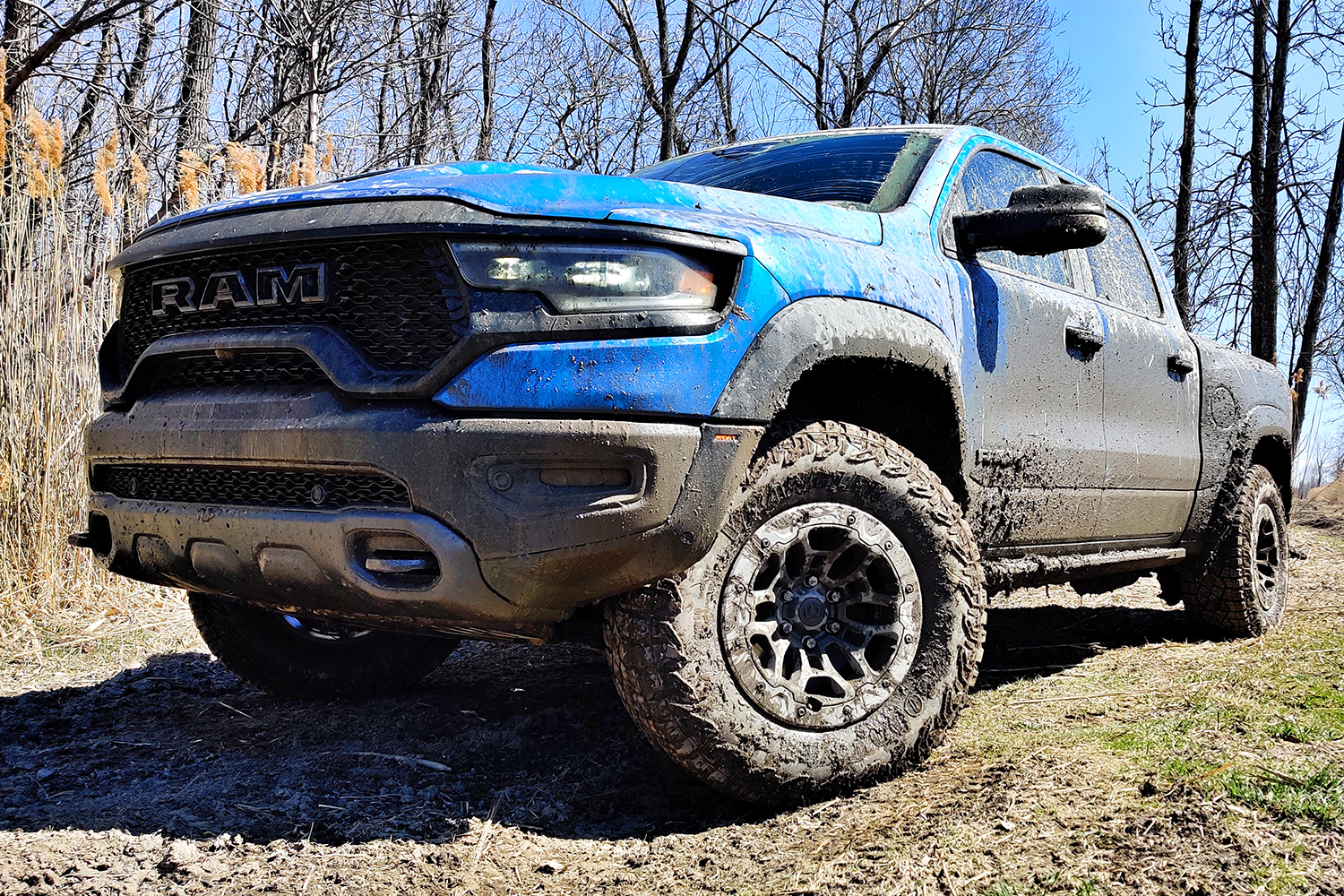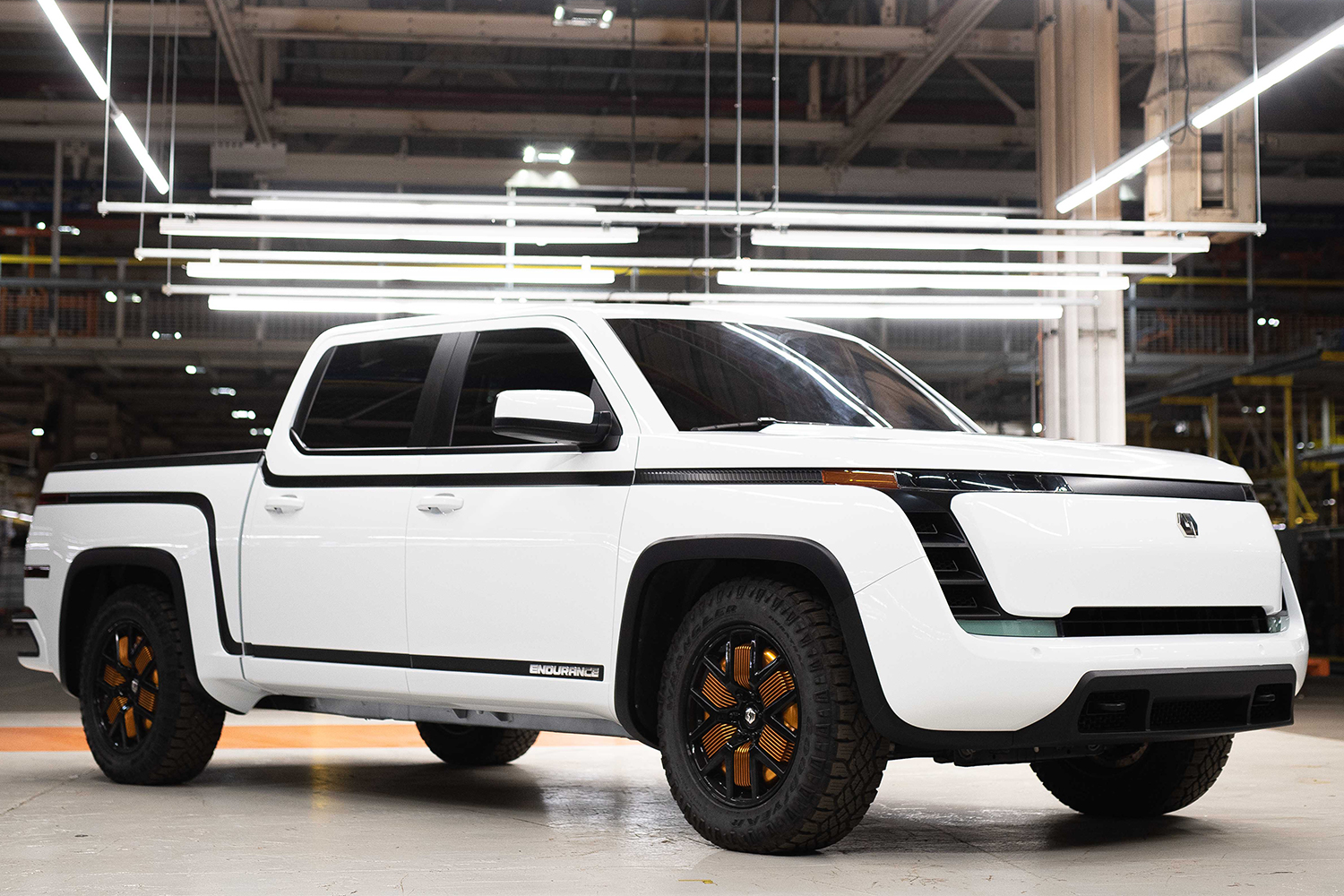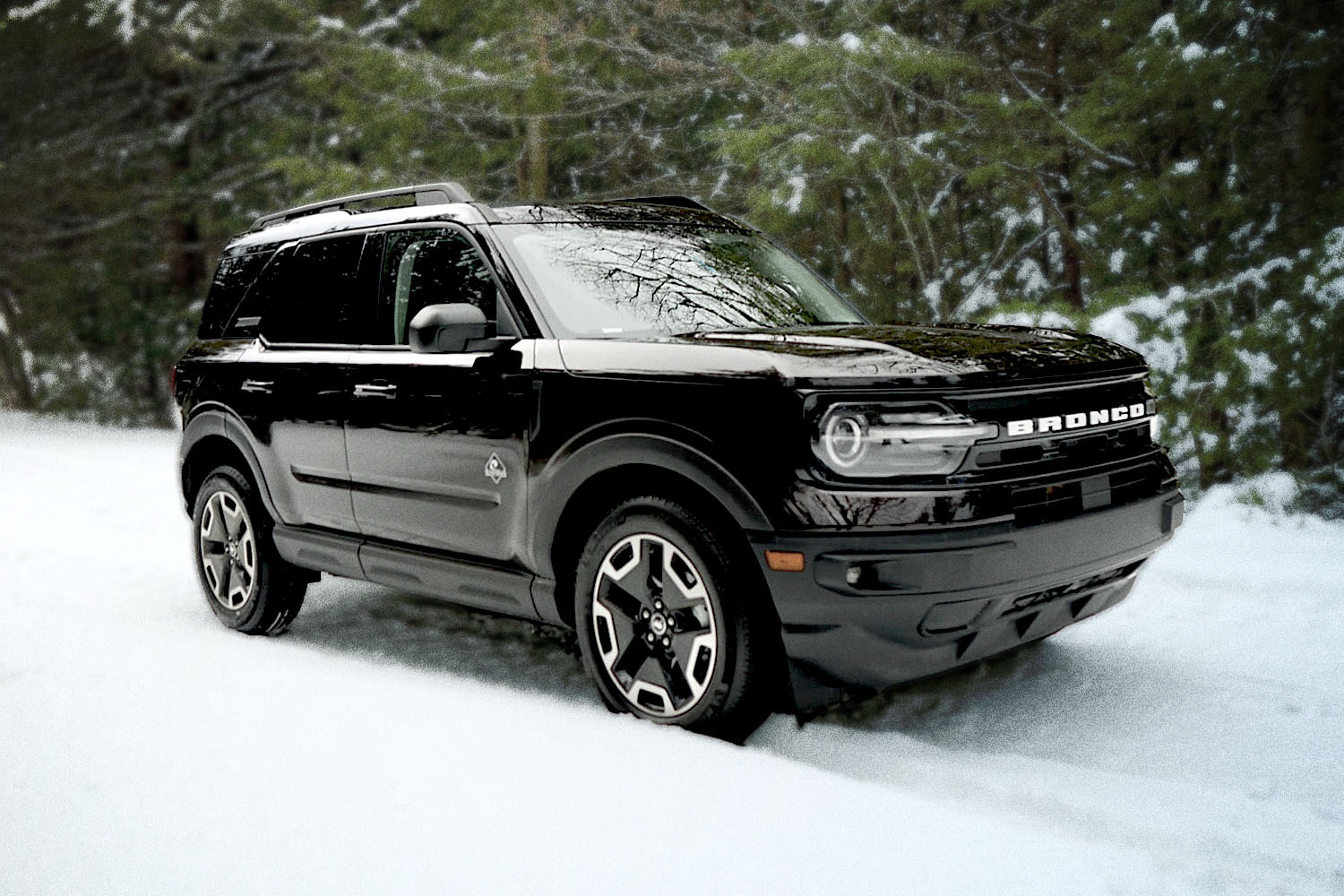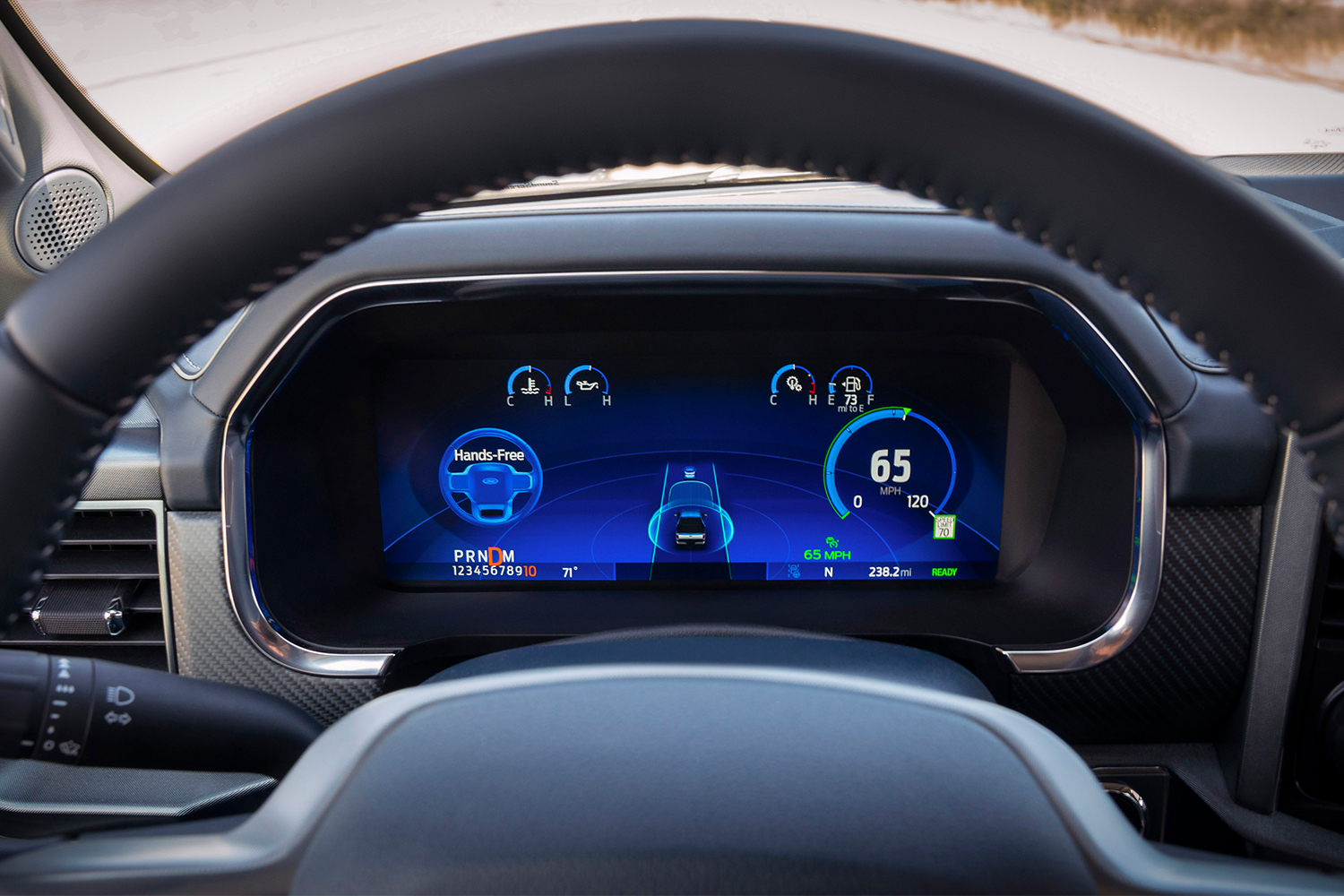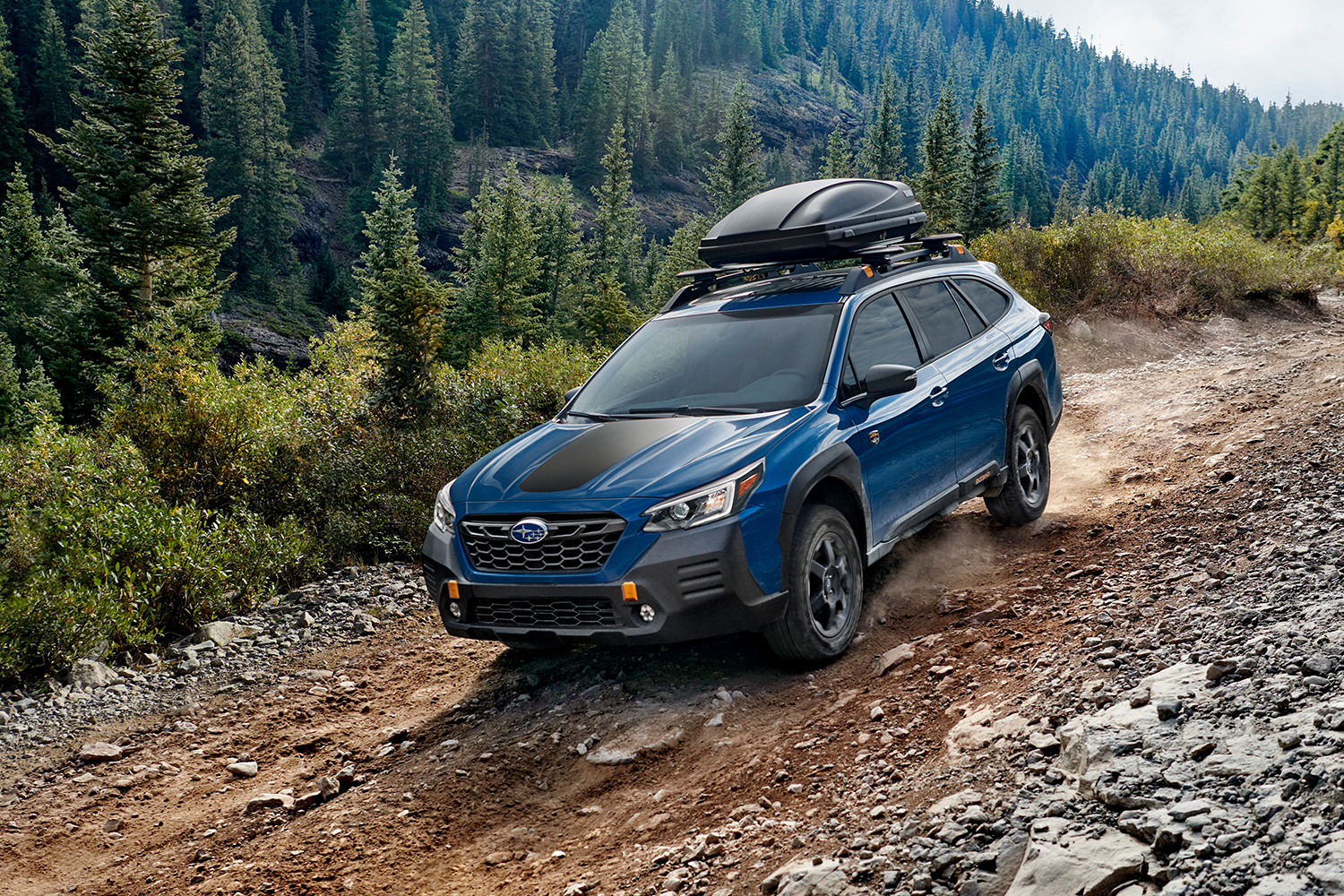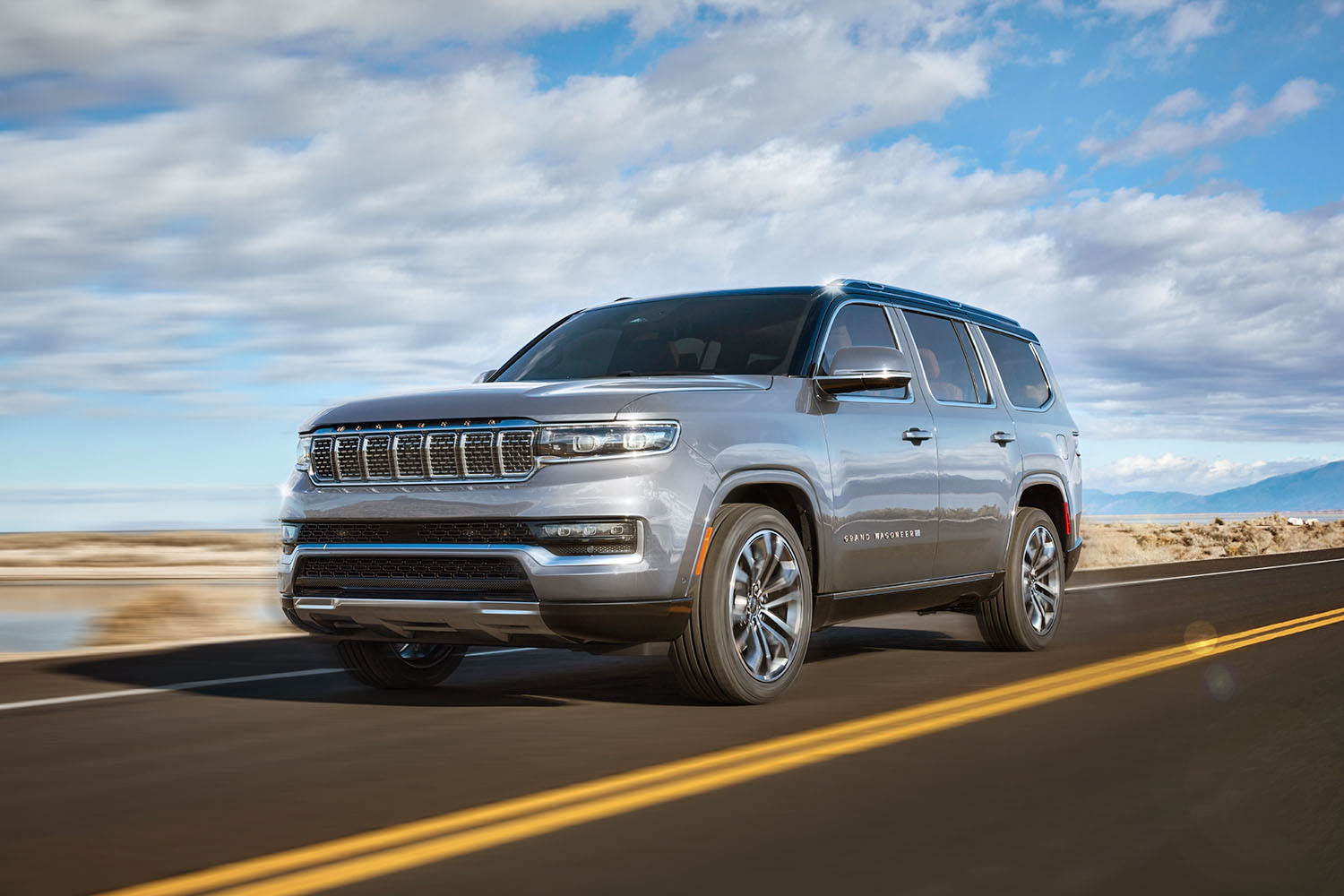Sport trucks are dead and buried, their carcasses dragged through the mud by the resurgence of rough-and-tumble off-road packages available from nearly every pickup builder. After a renaissance in the early 2000s that gave birth to a succession of tire-roasting monsters boasting superchargers and, in one case, a Viper engine, the market took a hard turn in the teens towards desert-running rigs like Ford’s F-150-based Raptor and a slew of Toyota Racing Development (TRD) off-roaders.
Despite the success of its mega-muscled Raptor, as well as the direct threat posed by the Chevrolet Colorado ZR2 to TRD’s midsize trail-boss hegemony, Ford has been late to the game with a butched-up version of its own entry-level Ranger pickup. That all changes for 2021 with the introduction of the Tremor, a package that proposes a hardcore interpretation of the Ranger for Blue Oval fans who don’t want to abandon the mothership when it’s time to leave the pavement behind.
Does it deliver? We left the pavement behind to find out.
What’s in a Tremor, Anyway?
It’s important to have some context about what the most recent Ranger is trying to achieve. Imported from its global product portfolio just two years ago as a stop-gap measure to soak up the midsize sales bleed that had been streaming across town towards Chevrolet and GMC, the midsize pickup is something of a compromise that sits outside the standard flow of what Ford truck fans have come to expect. This is seen primarily in its interior, which is as dated as the older-tech platform the Ranger sits on, and its ride quality, which has been criticized as bouncy regardless of which trim level is specified.
There’s a new Ranger on the way, one that will no doubt be designed this time with American audiences in mind; in the interim, the Tremor turns to Ford Performance’s extensive upgrade catalog rather than engineer a more cohesive package. It’s not a bad strategy, and it helps keep the Tremor a relatively affordable $4,290 option, but it lacks some of the sizzle found from Chevrolet (the ZR2’s dynamic suspension spool valve, or DSSV, shocks are sourced from race-car builder Multimatic).
So what does ticking the Tremor box land you? The centerpiece is a set of Fox 2.0 monotube shocks front and rear, matched with a set of 32-inch off-road tires. Everything else that the Tremor brings to the table — retuned springs, a slight suspension lift, an electronic locking rear differential and a wider track — is there to support those components. Aesthetically, the beefed-up Ranger also includes tow hooks, a set of bang-your-shins side steps, and a few decals and trim details to remind you that you’re in Tremor country.
Keep in mind, too, that while the Tremor package costs just a few hundred bucks past the $4,000 mark, it’s only available on four-door crew cab Rangers at the XLT or Lariat trim level. This further boosts its price tag above the base 4×4 model, with all-in stickers coming in competitive with the Colorado ZR2 and as much as $5K less than a comparable Tacoma TRD Pro.
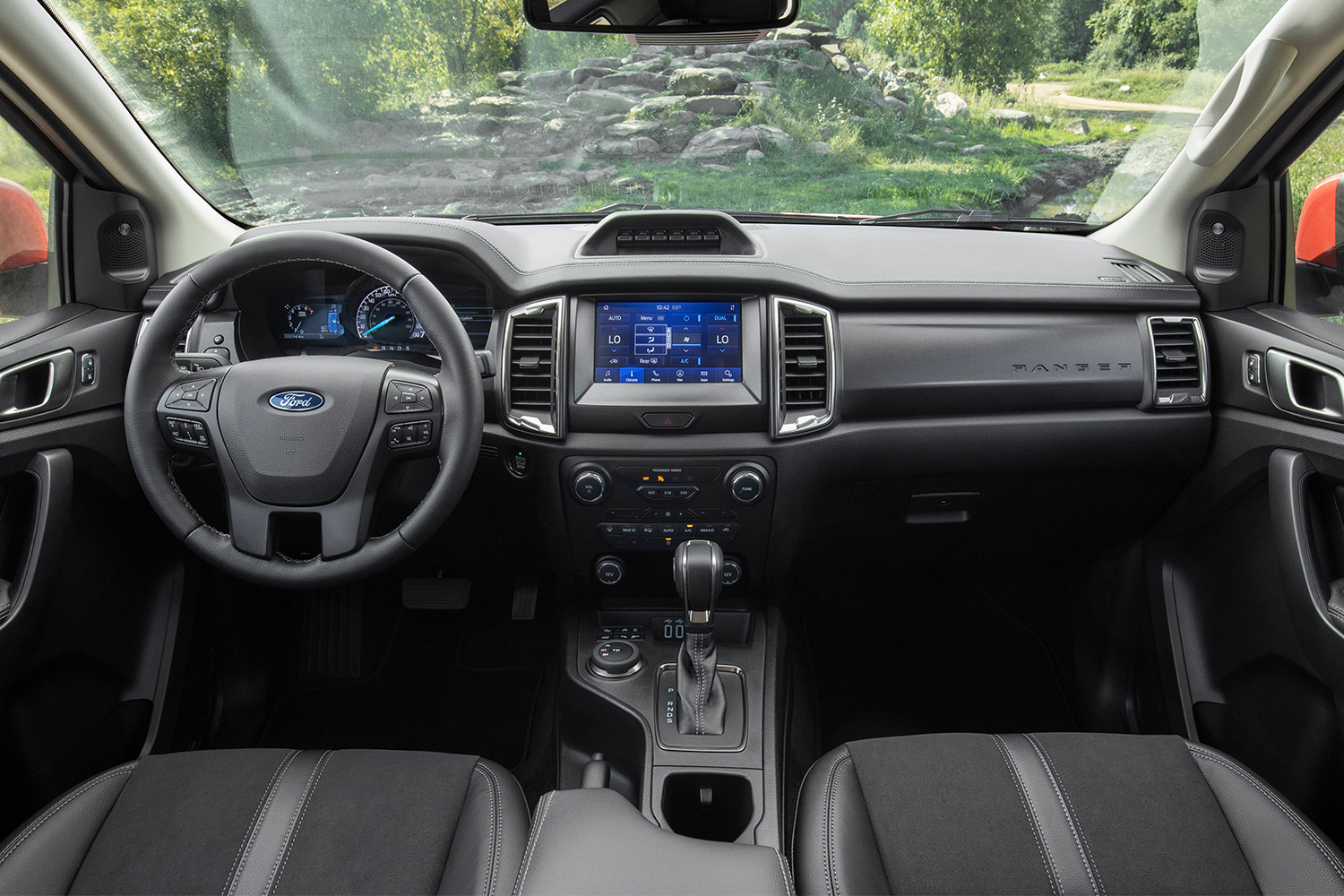
The Parts Bin Approach
There are both advantages and disadvantages to the Ford Ranger Tremor’s parts bin approach to building an off-road truck. Softer shocks that can absorb a pounding over uneven terrain are also known for adding a rubber-legged character when it’s time to change direction on asphalt. In the case of the Tremor, the Fox dampers actually absorb some of the stiff-legged shake that has long been a Ranger characteristic, improving ride quality on the daily drive while at the same time adding extra toughness. Ford has also preserved the Ranger’s towing capacity despite its revised suspension, which remains class leading by a fair margin as compared with other midsize off-road specials.
Where the Ranger Tremor fall short is in offering anything truly “special” in a segment where it’s facing an uphill battle as a challenger against the Tacoma’s 240,000 units a year. GM recognized this fact when it outsourced trick DSSV tech for the ZR2, which gave it a leg up over the TRD Pro and helped attract a new cohort of Colorado customers to its showrooms.
The Tremor, however, is best thought of as TRD Pro-lite. There’s nothing here that you couldn’t already add to a base four-wheel drive Ranger right at order time, and it’s missing some of the more compelling bits from the Ford Performance catalog (such as the available retuned ECU that ekes more power from its four-cylinder turbocharged engine) that could have honed the truck’s edge.

Off-Road Ups and Downs
Standard tune or not, with 270 horses and 310 lb-ft of torque on tap, the 2.3-liter motor under the Ranger Tremor’s hood remains one of the truck’s more compelling points. Despite being matched with a 10-speed automatic transmission that frequently protests with uncertainty at low-speed throttle inputs, at full gallop it’s a reasonably quick vehicle, and one that (based on previous Ranger towing experience) has no difficulty hauling up to 7,500 lbs of trailer weight.
That’s all well and good, but how does the Tremor stack up when faced with its intended environment? On a slick, bumpy trail, the Ranger acquitted itself just fine, digging deep in 4LO as needed to crawl out of particularly deep puddles of slippery brown water, but for the most part happy to motor forward in 4HI with the vehicle’s electronically assisted Terrain Management System set appropriately.
Did the extra ground clearance help? Sure, but after having spent some time wheeling around the standard four-wheel drive FX4 package Ranger, it was hard to detect a real difference in either truck’s ability to eat mud. I’d attribute a lot of the Ford’s competence in parsing a problematic trail to its excellent set of tires, which are often half the battle in any expedition. While the Fox shocks did the job, the rear of the truck was frequently kicked out to the side and jostled up and down in a way that the Colorado ZR2’s DSSV design never evinces.

Worth It to Wait
In short, the Ford Ranger Tremor is a perfectly fine midsize truck option that doesn’t particularly stand out from the pack when tested off-road. If you bleed Ford blue, that’s probably going to be enough for you, but if you want to keep up with the best you’ll want to head on over to Chevrolet or Toyota for a more focused crawl.
Better yet, if you desire a dedicated rock machine but can afford to wait, why not put off your purchase until the next generation Ranger arrives — or, if you don’t need an open cargo bed, cast your gaze across the showroom at any of the half-dozen Bronco models Ford is dying to sell you?
This article was featured in the InsideHook newsletter. Sign up now.
